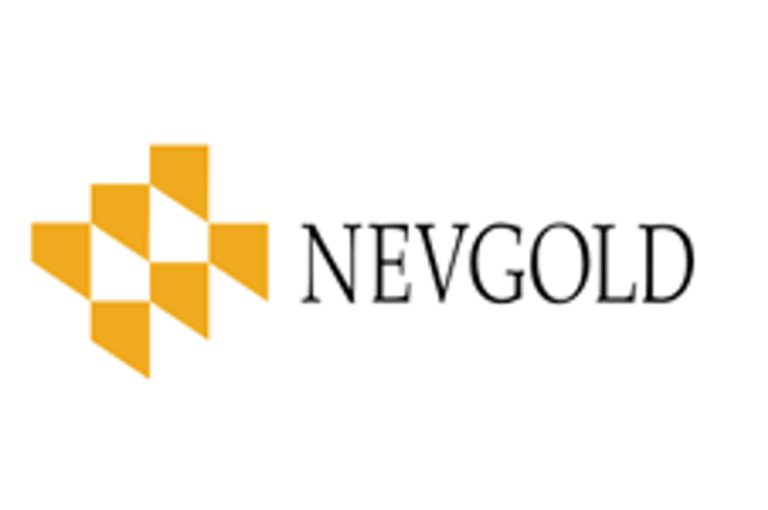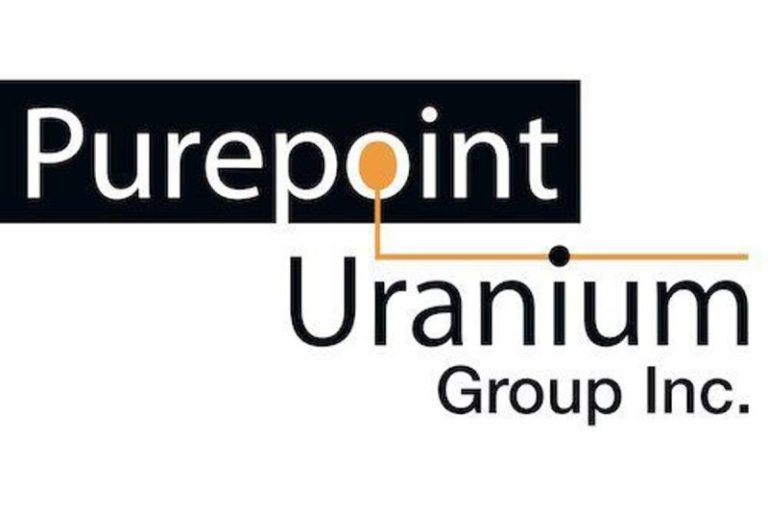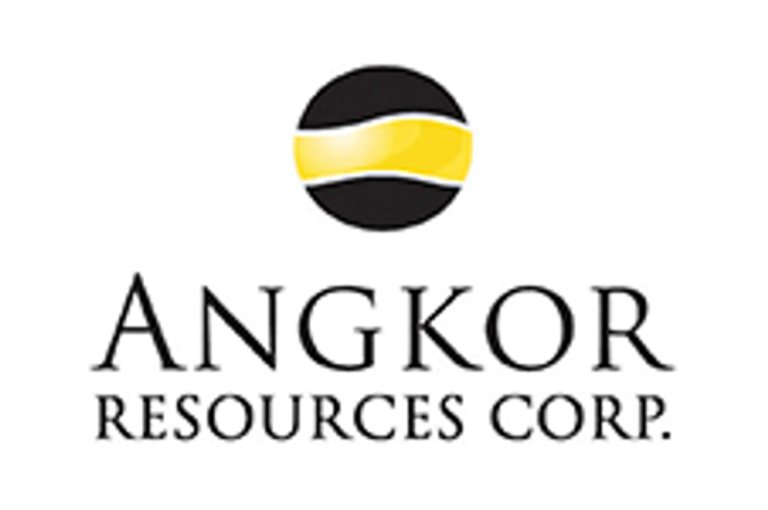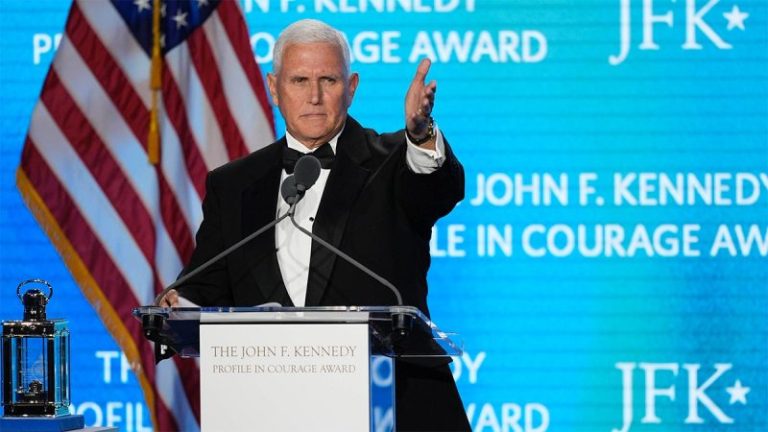Nevgold Corp. (‘ NevGold ‘ or the ‘ Company ‘) ( TSXV:NAU,OTC:NAUFF) (OTCQX:NAUFF) (Frankfurt:5E50 ) is pleased to announce an updated Mineral Resource Estimate (‘ MRE ‘) for the Nutmeg Mountain gold project (the ‘ Project ‘, ‘ Nutmeg Mountain ‘) in Idaho.
Key Highlights
- Open-Pit, Oxide, Heap-Leach Gold Mineral Resource in the Western USA: 1.19 Mozs of Indicated Resources at 0.50 g/t Au (74.2 Mt) and 548 kozs of Inferred Resources at 0.34 g/t Au (49.8 Mt). (Table 1, Figure 1, Figure 2)
- Higher Grade Mineralization Within the Resource: increasing the cut-off grade from the base case of 0.20 g/t Au to 0.60 g/t Au, the Project has 560 kozs of Indicated Resources at 0.92 g/t Au , and 85 kozs of Inferred Resources at 0.87 g/t Au . The higher grade mineralization starts at surface as seen in Figure 2 and Figure 3, and is within the 0.20 g/t Au cut-off grade MRE. To date, the Company has not completed any mine scheduling studies on the MRE. Exploring for more potential high-grade mineralization will be a key focus as the project is advanced with further drilling and subsequent resource estimates.
- Significant Growth Captured Over Last 24 Months: compared to the 2023 MRE, the base case pit-constrained indicated tonnage increased by over 18% and inferred by over 100%, with further upside identified with high priority drill targets.
- Mineralization Starts at Surface with Low Strip Ratio: mineralization at Nutmeg Mountain starts at surface. The strip ratio of the project based on conceptual pit-shells is expected to be less than 1:1 , which is extremely low for an open-pit, oxide, heap-leach gold project. (Figure 2, Figure 3)
- Tier One Jurisdiction: the Project is located in southwest Idaho, which is a favorable mining jurisdiction. (Figure 4, Figure 5)
NevGold CEO, Brandon Bonifacio, comments: ‘This is another important milestone for NevGold and the Nutmeg Mountain gold project in Idaho as it further validates the quality of the asset located in a tier-one mining jurisdiction. We are pleased with the results of the updated MRE, as it illustrates the size and heap-leach grade of this at-surface, open-pit oxide gold project in the Western USA. The updated MRE also further validates the strong growth potential of mineralization at the Project, which remains open in multiple directions. We look forward to drilling the highly prospective targets that we have identified at surface and at depth. After completion of this MRE, we plan to advance to a Preliminary Economic Assessment (PEA) to further advance the Project to the next stage of development. We have an extremely favorable macroeconomic situation with the gold price and momentum in the US to advance high-quality, domestic mineral projects . ‘
Table 1: Nutmeg Mountain – Open-Pit, Heap-Leach MRE (see notes below)
| Cut-Off Grade Au g/t |
Classification | Tonnes | Gold Grade Au g/t |
Ounces Gold |
| 1.00 | Indicated | 5,433,000 | 1.31 | 230,000 |
| 1.00 | Inferred | 610,000 | 1.38 | 27,000 |
| 0.80 | Indicated | 10,061,000 | 1.12 | 362,000 |
| 0.80 | Inferred | 1,297,000 | 1.12 | 47,000 |
| 0.60 | Indicated | 19,025,000 | 0.92 | 560,000 |
| 0.60 | Inferred | 3,025,000 | 0.87 | 85,000 |
| 0.50 | Indicated | 26,353,000 | 0.81 | 688,000 |
| 0.50 | Inferred | 5,711,000 | 0.72 | 132,000 |
| 0.40 | Indicated | 37,167,000 | 0.71 | 844,000 |
| 0.40 | Inferred | 10,496,000 | 0.59 | 199,000 |
| 0.30 | Indicated | 52,556,000 | 0.60 | 1,014,000 |
| 0.30 | Inferred | 22,458,000 | 0.46 | 332,000 |
| 0.20 | Indicated | 74,205,000 | 0.50 | 1,186,000 |
| 0.20 | Inferred | 49,749,000 | 0.34 | 548,000 |
| 0.10 | Indicated | 95,465,000 | 0.42 | 1,294,000 |
| 0.10 | Inferred | 87,406,000 | 0.26 | 732,000 |
Notes:
- Effective date of this mineral resource estimate is August 29, 2025.
- All mineral resources have been estimated in accordance with Canadian Institute of Mining, Metallurgy and Petroleum definitions, as required under National Instrument 43-101 (‘ NI 43-101 ‘). The Mineral Resource Statement was prepared by Greg Mosher, P. Geo (Global Mineral Resource Services, ‘ GMRS ‘) in accordance with NI 43-101.
- Mineral Resources reported demonstrate a reasonable prospect of eventual economic extraction through additional exploration, as required under NI 43-101. Mineral Resources are not Mineral Reserves and do not have demonstrated economic viability. There is no certainty that all or any part of the estimated Mineral Resources will be converted into Mineral Reserves. The potential development of the Mineral Resources may be materially affected by environmental, permitting, legal, marketing, and other relevant issues.
- Mineral Resources are reported at a cut-off grade of 0.20 g/t Au for an open-pit mining scenario. Cut-off grades are based on a price of US$2350/oz gold, and a number of operating cost and recovery assumptions, including a reasonable contingency factor. Metallurgical recoveries of 80% were used. Densities based on lithology were assigned.
- Ounce (troy) = metric tonnes x grade / 31.10348. All numbers have been rounded to reflect the relative accuracy of the estimate.
- The quantity and grade of reported Inferred Mineral Resources are uncertain in nature and there has not been sufficient work to define these Inferred Mineral Resources as Indicated or Measured Mineral Resources. It is reasonably expected that many of the Inferred Mineral Resources could be upgraded to Indicated Mineral Resources with continued exploration, however, there is no assurance that further exploration will result in all or any part of the Inferred Mineral Resources being converted into Indicated Mineral Resources.
- Tonnages and ounces in the tables are rounded to the nearest thousand and hundred, respectively. Numbers may not total due to rounding.
Figure 1 – Plan view map of Nutmeg Mountain gold project. Black line outlines the larger unpatented Bureau of Land Management (BLM) project boundary, with orange outline defining patented claims and private leases which do not have limitations on disturbance acreage allowed, and can be drilled with a notice to the State of Idaho. Blue dashed lines represent identified targets based on numerous geological data layers and work completed at the Project . To view image please click here
Figure 2 – Cross-section looking north through the MRE block model with all blocks above a 0.10 g/t Au cut-off. Mineralization starts at surface, and there is further mineralization beneath the US$2350/oz pit-shell used in the MRE.
To view image please click here
Figure 3 – Cross-section looking north through the MRE block model with 0.60 g/t Au cut-off. The higher grade mineralization is within the 0.20 g/t Au cut-off MRE and starts at surface. To date, the Company has not completed any mine scheduling studies on the MRE. To view image please click here
Figure 4 – Map of Washington County district in Southwest Idaho including the Nutmeg Gold Trend, and emerging Hercules Copper Trend. Nutmeg Mountain is approximately 30 km from the Hercules Copper Trend. To view image please click here
Nutmeg Mountain – Summary
Nutmeg Mountain is a low-sulphidation epithermal gold deposit located in southwest Idaho, approximately 20 kilometers east of Weiser, Idaho, and 120 kilometers northwest of Boise, Idaho. The Project is approximately 1,724 hectares in size, which is comprised of 210 federal unpatented claims, 12 patented claims, and 2 private leases. The Project has 940 core, reverse circulation (‘RC’), and rotary drill holes totaling over 71,625 meters of drilling.
Figure 5 – Map of NevGold’s projects in the Western USA. To view image please click here
Nutmeg Mountain – Additional Exploration Potential
The work completed to date by the Company has identified several high priority drill targets for future drilling. Historical drilling was mainly focused on the outcropping and near-surface disseminated mineralization, which is primarily located on the patented mining claims and other privately owned ground. (Figure 1) NevGold has identified numerous additional near-surface gold targets on the unpatented mining claims surrounding the private ground. Additionally, the average drill hole depth at the Project is less than 75 meters, and to date the potential high-grade feeder veins typically associated with low-sulphidation epithermal gold systems have yet to be identified. Discovering additional near-surface disseminated gold mineralization and the potential high-grade feeder structures will continue to be the focus of NevGold’s ongoing exploration.
Nutmeg Mountain Deposit Geology and Model
Nutmeg Mountain is a low-sulphidation epithermal gold deposit with exploration dating back to the 1980s. The Project is host to Miocene-age basalt and tuffaceous sediments, Payette Formation sandstone and siltstone, and lacustrine sedimentary rocks of the Pliocene-age Idaho Group.
Most gold mineralization that has been identified at the Project to date occurs within a north-trending graben, which is where most of the drilling has been concentrated. The graben is bounded by faults on the east and west, and sedimentary units change in thickness and character across the bounding faults. Mineralization is associated with multi-phase hydrothermal brecciation and veining, strong silicification, acid alteration, and faulting. Much of the surface alteration is composed primarily of opaline silica and appears to be replacement of Payette Formation sandstone.
There are four principal zones of mineralization. The Main Zone is the most significant in size and contains most of the gold in the MRE. Gold mineralization is hosted primarily in silicified Payette Formation sandstone that has been subjected to multiple phases of hydrothermal alteration, brecciation, and veining. The Main Zone mineralization occurs over a north-south distance of approximately 1,200 meters, a width from 250 to 500 meters, and a vertical thickness of up to 180 meters. Most of the gold in the MRE is situated in the top 75 meters of this vertical thickness, creating an opportunity to expand the resource vertically with further deeper drilling and additional data.
The North Zone underlies the narrow ridge crest at the north end of the Project, approximately 600 meters northeast of the Main Zone. In the North Zone, gold mineralization occurs as an oval, north-trending, tabular body that is up to 60 meters thick, approximately 335 meters long (N-S) and 150 meters wide. The Stinking Water Zone lies approximately 400 meters west of the North Zone and 600 meters north of the Main Zone. The Cove Creek Zone is located 600 meters southeast of, and approximately 170 meters lower than the Main Zone, with little to no surface expression.
Figure 6 – Plan view map of Nutmeg Mountain gold project with geology summary. The red outlines define the mineralization at a 0.20 Au g/t cutoff. The gold dash outline represents areas with additional mineralization potential.
To view image please click here
Drillhole Data and QAQC Procedures
Prior to the Company’s work, the Project was evaluated by several historical work programs starting in the 1980s including geological mapping, geochemical and geophysical surveying, several metallurgical bulk samples and 934 core, RC, and rotary drill holes totaling 70,254 meters. In early 2023, NevGold completed five core holes totaling 1,371 meters, four of which were located within the known envelope of mineralization. The data from these holes have been used in the MRE.
There is minimal documented QA/QC procedures or data available for drill programs prior to 2008. The Company drill program utilized full industry-standard survey control and QAQC programs and is designed to systematically validate as much of the historical drilling as possible through collar surveys, re-logging, and re-sampling.
Reasonable Prospects of Eventual Economic Extraction
To support reasonable prospects for eventual economic extraction for the MRE, GMRS used the estimated block model to generate an optimized pit-shell using the following assumptions: a gold price of US$2350/oz, mining costs of US$2.20/tonne moved, processing costs including general and administration costs of US$5.50/tonne, heap-leach process recovery of 80%, and an overall pit slope angle of 50 degrees. Mining and processing costs are based on industry norms and benchmarking for this type of deposit and contemplated mining method.
Environmental, Social, and Governance Opportunities
As part of its commitment to environmental, social, and governance (ESG) practices, the Company has commenced a review of alternate energy potential near the Project. These alternate sources include geothermal, solar, and wind power generation. In particular, the Project is in an area of high geothermal energy potential with two geothermal projects already operating nearby. There are also a number of solar and wind power generation projects in Idaho. The Company is actively considering collaboration agreements with alternate energy partners to assess opportunities to lower the carbon footprint at the Project.
Technical Report
A technical report is being prepared on the Updated MRE in accordance with NI 43-101 standards, and will be available on the Company’s website and on SEDAR+ at www.sedarplus.ca within 45 days of the date of this news release. The MRE was prepared by independent mining consulting firm GMRS.
Qualified Person Statements
Mr. Greg Mosher (P.Geo., M.Sc. Applied), Principle of GMRS is an independent ‘Qualified Person’ under NI 43-101 and responsible for the MRE. Mr. Mosher has prepared and approved the scientific and technical information related to the MRE contained in this news release.
Greg French, CPG, the Company’s Vice President, Exploration, and a ‘Qualified Person’ under NI 43-101 has also reviewed and approved the scientific and technical information contained in this news release.
ON BEHALF OF THE BOARD
‘Signed’
Brandon Bonifacio, President & CEO
For further information, please contact Brandon Bonifacio at bbonifacio@nev-gold.com, call 604-337-5033, or visit our website at www.nev-gold.com .
About the Company
NevGold is an exploration and development company targeting large-scale mineral systems in the proven districts of Nevada and Idaho. NevGold owns a 100% interest in the Limousine Butte and Cedar Wash gold projects in Nevada, and the Nutmeg Mountain gold project and Zeus copper project in Idaho.
Please follow @NevGoldCorp on Twitter , Facebook , LinkedIn , Instagram , and YouTube .
Neither the TSX Venture Exchange nor its Regulation Services Provider (as that term is defined in the policies of the TSX Venture Exchange) accepts responsibility for the adequacy or accuracy of this release.
Cautionary Note Regarding Forward Looking Statements
This news release contains forward-looking statements that are based on the Company’s current expectations and estimates. Forward-looking statements are frequently characterized by words such as ‘plan’, ‘expect’, ‘project’, ‘intend’, ‘believe’, ‘anticipate’, ‘estimate’, ‘suggest’, ‘indicate’ and other similar words or statements that certain events or conditions ‘may’ or ‘will’ occur. Forward looking statements in this news release include statements with respect to estimates of mineral resources, the Company’s future exploration plans with respect to the Project, the intention to complete future updated MRE’s and a PEA and the timeline for completion, and the upgrade of inferred mineral resources to indicated mineral resources. Such forward-looking statements involve known and unknown risks, uncertainties and other factors that could cause actual events or results to differ materially from estimated or anticipated events or results implied or expressed in such forward-looking statements, which include the dangers inherent in exploration, development and mining activities; the uncertainty of mineral resource estimates; not achieving an updated MRE, a PEA and other exploration goals or estimates; actual exploration or development plans and costs differing materially from the Company’s estimates; obtaining additional financing from time-to-time to continue operations; compliance with government regulation; stock market volatility that may adversely affect the price of the Company’s securities; and the ability to obtain and maintain any necessary permits, consents or authorizations required for mining activities. Any forward-looking statement speaks only as of the date on which it is made and, except as may be required by applicable securities laws, the Company disclaims any intent or obligation to update any forward-looking statement, whether as a result of new information, future events or results or otherwise. Forward-looking statements are not guarantees of future performance and accordingly undue reliance should not be put on such statements due to the inherent uncertainty therein.
News Provided by GlobeNewswire via QuoteMedia










